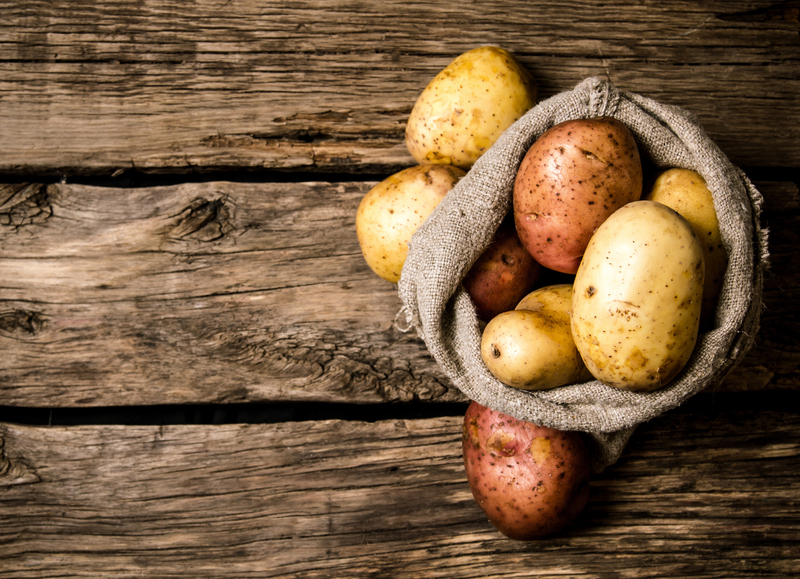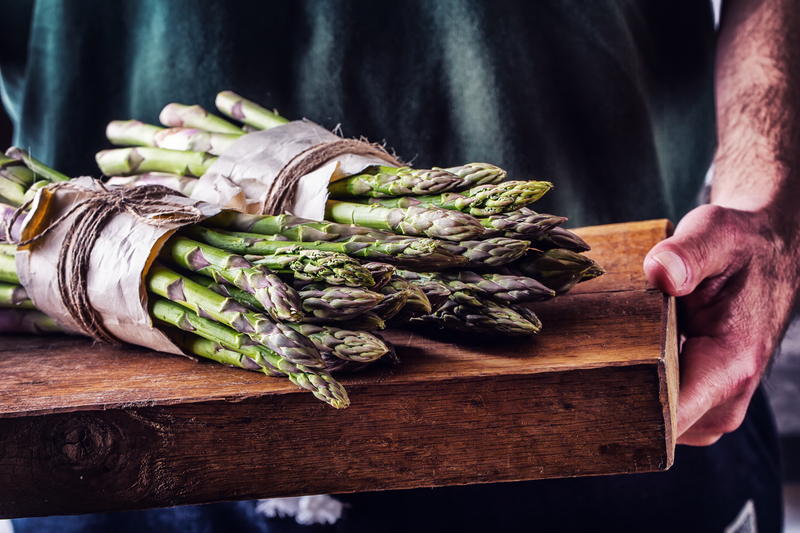Say Goodbye to Weeds: 3 Tips for a Happier, Healthier Garden
Posted on 23/09/2025
Say Goodbye to Weeds: 3 Tips for a Happier, Healthier Garden
Weeds can turn a flourishing, vibrant garden into a battleground. Pulling them out can seem never-ending, and sometimes it feels like nothing works. But don't despair—with the right strategies, you can finally say goodbye to weeds and create a space where your plants will thrive. In this comprehensive article, we'll share three powerful tips for a weed-free, healthier garden, so you can focus on enjoying the beauty of your outdoor sanctuary.
Why You Need to Say Goodbye to Weeds
Weeds aren't just unsightly; they actually threaten the health of your garden. These unwanted plants compete with your chosen flowers, vegetables, and shrubs for essential resources such as water, nutrients, and sunlight. In addition, weeds can:
- Attract unwanted pests that feed on your preferred garden plants.
- Harbor diseases that can be transmitted to your crops and flowers.
- Reduce yields in vegetable gardens and impact the growth rate of ornamental plants.
By taking proactive measures to remove and prevent weeds, you'll not only improve your garden's appearance but also give your plants the best chance for abundant, healthy growth.

Understanding Weeds: Know Your Enemy
Before diving into the best methods to eliminate weeds, it helps to understand what you're dealing with. Different types of weeds require different management strategies:
- Annual weeds (like crabgrass or chickweed) complete their life cycle in one season—target them before they set seed.
- Perennial weeds (such as dandelions and bindweed) return year after year, often from resistant root systems.
- Biennial weeds (like mullein and burdock) grow leaves their first year and flower in the second year.
Knowing the difference helps determine the most effective weed control methods for your garden.
Tip #1: Mulching—Nature's Weed Barrier
When you think of saying goodbye to weeds, mulching should be one of your first lines of defense. Mulch acts as an effective physical barrier, preventing weed seeds from reaching the sunlight they need to sprout. Beyond that, mulch retains soil moisture, regulates temperature, and even adds organic matter as it decomposes.
The Best Mulches for Weed Control
- Organic mulches (wood chips, straw, grass clippings, shredded bark) improve soil structure and fertility as they break down.
- Inorganic mulches (landscape fabric, stones, black plastic) provide long-lasting coverage and are best used in pathways or around non-edible plants.
How to Apply Mulch Correctly
Follow these simple steps for maximum weed suppression:
- Weed First: Remove existing weeds by hand or with a hoe before applying any mulch.
- Apply Generously: Spread a 2-4 inch layer of mulch over the soil, being careful not to pile it up against plant stems, which can cause rot.
- Replenish Annually: Organic mulches decompose over time, so top them up each season to maintain their weed-stopping power.
By consistently mulching, you'll greatly reduce the number of weeds that ever see the light of day!
Tip #2: Smart Planting Strategies to Beat the Weeds
The best way to prevent weeds in your garden is to deny them room to grow. Intelligent garden design and planting strategies can create a dense, healthy landscape where weeds struggle to get a foothold.
Dense Planting Techniques
- Space plants closer together (within recommended guidelines), so their leaves touch as they mature. This creates a living mulch that shades out weed seeds.
- Use ground covers like creeping thyme, ajuga, or low-growing sedum between taller plants. These plants often outcompete weeds for space and resources.
- Companion planting: Some plant combinations, such as planting marigolds alongside vegetables, can naturally deter certain weeds and pests.
Crop Rotation and Succession Planting
In vegetable gardens, rotating crops each year can disrupt weed life cycles and reduce the buildup of weed seeds in the soil. Follow your crops with fast-growing cover crops (like clover or buckwheat) that quickly blanket the soil, smothering out unwanted weeds.
Maintaining Healthy Soil
Nutrient-rich, well-cared-for soil grows strong plants that compete better against weeds. Regularly add compost, test your soil's pH, and avoid compacting the soil by stepping between beds.
Smart planting is truly a gardener's best tool to say goodbye to weeds forever!
Tip #3: Consistent, Targeted Weed Removal
Even the best gardens will see a few weeds pop up. The difference between a manageable garden and one overrun by weeds is a simple, regular weed removal routine.
Effective Weeding Methods
- Hand-pulling: The most thorough method, especially for annual weeds and young seedlings. Pull weeds when the soil is moist to remove their roots completely.
- Hoeing: For large spaces or stubborn weeds, use a hoe to slice off weeds just below the soil's surface.
- Weed knives or forked tools: These work well for perennial weeds with deep taproots, like dandelions.
Timing is Everything
Weed young and weed often! Try to schedule a quick weeding session:
- After rain (when soil is soft, making roots easier to pull), or
- In early morning/evening to avoid the day's heat and minimize soil disturbance.
Never let weeds set seed! Many weeds produce thousands of seeds, so removing them before flowering prevents a future invasion.
Dispose of Weeds Properly
Do not compost mature weeds that have gone to seed, as many home compost systems do not reach high enough temperatures to kill seeds. Instead, bag them up for municipal waste or burn if allowed in your area.
Consistency is key to maintaining a happier, healthier, and weed-free garden over the long term.
Organic and Eco-Friendly Solutions for Weed Control
For those seeking non-chemical, organic weed control methods, the following eco-savvy solutions help keep weeds in check without harming the environment:
- Boiling water: Pour directly over weeds in pathways or cracks (avoid hitting roots of wanted plants).
- Homemade vinegar spray: Mix white vinegar with a bit of dish soap and spray on weed leaves (best for annuals and young weeds).
- Flame weeding: (with a flame weeder) is effective for driveways and gravel areas but must be used with extreme caution.
Remember, these methods may require repeated application, especially on established or perennial weeds.
Common Weed Mistakes to Avoid
- Over-tilling: Excessive tilling brings dormant weed seeds to the surface where they can sprout.
- Letting weeds seed: As mentioned, always remove weeds before they flower and seed.
- Ignoring garden edges and paths: Weeds thrive in neglected corners and spread quickly to beds.
- Skipping mulch: Bare soil invites weeds--always keep soil covered wherever possible.
The Benefits of a Weed-Free Garden
- Healthier plants: No competition means your flowers and vegetables grow stronger and yield more.
- Less pest and disease pressure: Weeds attract insects and disease, so reducing their number keeps your garden healthier.
- Beautiful landscape: A weed-free space looks clean, organized, and more enjoyable year-round.
- Less maintenance in the long run: A consistent weeding routine now means less work later.

Frequently Asked Questions About Weed Control
Do I have to use chemicals to control garden weeds?
No! The tips above focus on organic and manual methods to get rid of weeds. Chemicals are a last resort and can harm beneficial insects, pets, and the surrounding environment.
How often should I weed my garden?
Ideally, check your beds weekly, especially during peak growth season. Young weeds are easier to remove and less likely to establish deep roots or set seed.
Is landscape fabric safe and effective?
Landscape fabric can be useful in non-vegetable beds and under pathways, but mulch alone is often sufficient for most flower and vegetable gardens. If you use fabric, always top with mulch for best results.
Can I just let the weeds grow in a natural garden?
Wildflower meadows and pollinator gardens allow some native "weeds" that benefit wildlife. However, invasive species can take over, so it's important to identify which plants belong and remove aggressive invaders.
Conclusion: Create a Happier, Healthier Garden Today
Weeding doesn't have to be a losing battle. Armed with these top three tips--mulching, smart planting, and consistent targeted weed removal--you can say goodbye to garden weeds and reclaim the joy of gardening.
Remember: a weed-free garden is a healthy garden. By suppressing unwanted plants, supporting your soil, and sticking to a regular schedule, you'll soon enjoy vibrant flowers, bountiful vegetables, and a landscape you're proud of all season long.
Now that you know how to banish weeds for good, it's time to put these strategies into action. Your plants will thank you, and so will your future self!
Ready to enjoy a happier, healthier, weed-free garden? Start today, and watch your outdoor space flourish!

